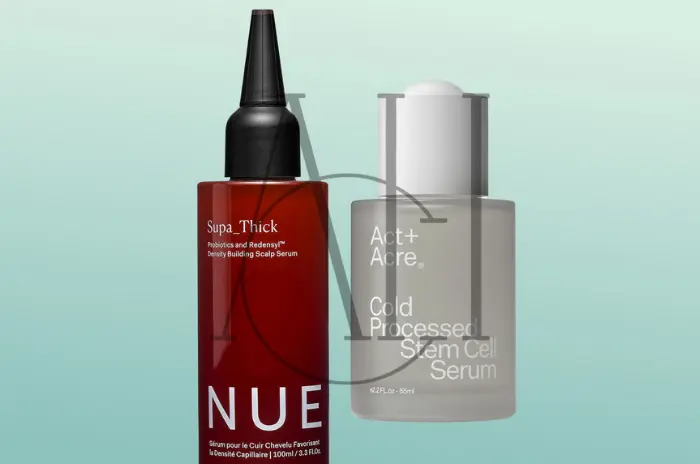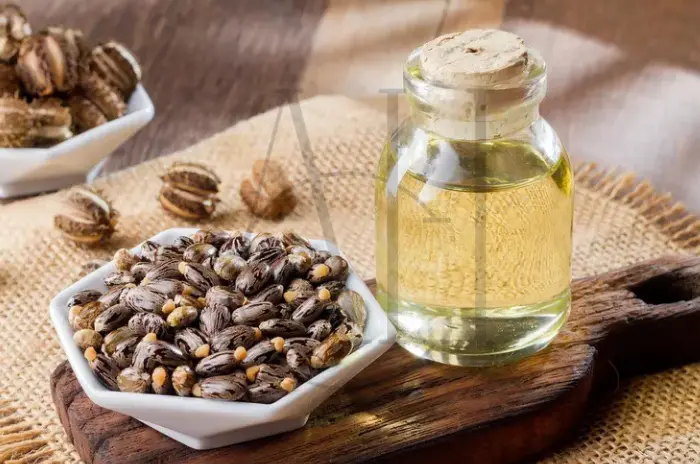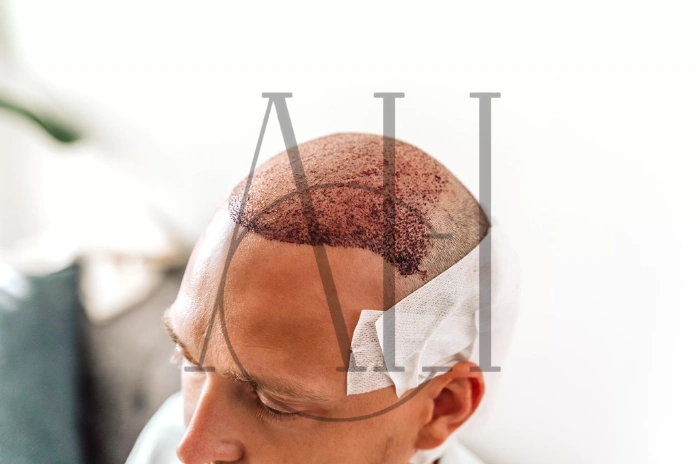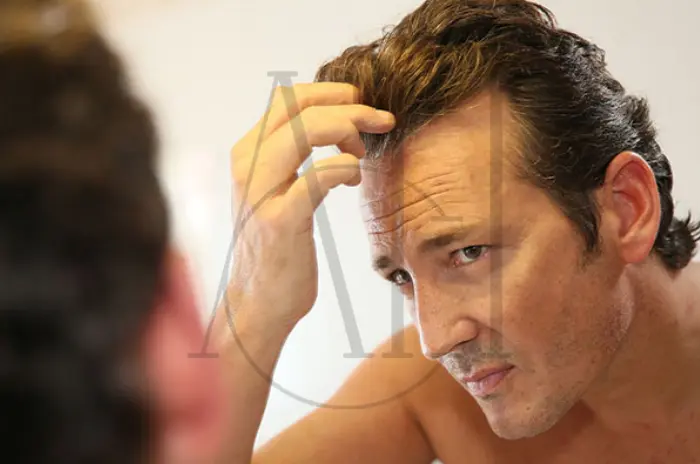At Albania Hair intermediary organization, we’re often asked which hair serums actually help with thinning, hair breakage, or slow growth. The truth: a serum is only as effective as its active ingredients, how consistently you use it, and whether it matches your scalp and hair type. This guide explains how serums work, which formulas dermatologists tend to favor, how long results take, potential side effects, and how to choose the right product for you.
Table of Contents
ToggleWhat Are Hair Growth Serums and How Do They Work?
Hair growth serums are leave-on topical formulas designed to improve the scalp environment and support follicles through one or more mechanisms:
-
Stimulating anagen (growth) phase and shortening telogen (resting) phase
-
Improving microcirculation and nutrient delivery around follicles
-
Reducing micro-inflammation and normalizing scalp oil and flake balance
-
Supporting extracellular matrix (follicle “anchoring”) for stronger fibers
-
Countering miniaturization in pattern hair loss when paired with the right actives
Common active categories and what they do:
| Active category | What it targets | Examples | Notes |
|---|---|---|---|
| Vasodilators / growth promoters | Push follicles into or maintain anagen | Minoxidil, caffeine, adenosine | Evidence strongest for minoxidil; adenosine has supportive data |
| Anti-androgenic support | Pattern hair loss environment | Serenoa repens (saw palmetto), green tea catechins | Adjunctive; not a replacement for prescription DHT blockers |
| Anti-inflammatory / antifungal | Itch, flake, seborrhea | Ketoconazole (shampoo), zinc pyrithione, piroctone olamine | Often used through scalp-care combo rather than in serums |
| Peptides / copper peptides | ECM support, signaling | GHK-Cu, acetyl tetrapeptide-3, biotinyl-GHK | Best as part of layered routines |
| Antioxidants / barrier support | Oxidative stress, sensitivity | Niacinamide, vitamin E, panthenol | Improve comfort and tolerance of stronger actives |
| Exfoliants (gentle) | Build-up, follicle access | Low-dose salicylic acid | Use sparingly to avoid irritation |
How serums fit with a broader plan:
-
For androgenetic alopecia, a serum with minoxidil or adenosine is often the foundation.
-
For stress- or diet-related shedding, combine serum use with nutrition optimization (protein, ferritin, vitamin D, zinc) and gentle scalp care.
-
For seborrheic scalp, control flakes first (e.g., antifungal shampoo) so serums can reach the skin evenly.
Top Dermatologist-Recommended Hair Growth Serums
Below is a category-based overview of formulas dermatology providers frequently recommend or consider as part of evidence-based routines. Brand availability varies by country; focus on actives.
| Serum type | When it’s used | Example actives on label | Who it suits best | Notes on use |
|---|---|---|---|---|
| Minoxidil serums/foams (2–5%) | First-line for pattern thinning | Minoxidil | Men and women with early-to-moderate thinning | Apply once daily consistently; initial shedding can occur |
| Low-alcohol minoxidil blends | Minoxidil sensitivity or dryness | Minoxidil + humectants | Dry or irritated scalps | Improves comfort; same efficacy if concentration is equal |
| Adenosine-based serums (0.75–1%) | Minoxidil alternative or add-on | Adenosine | Those preferring non-minoxidil options | Evidence supportive; gentle profile |
| Peptide complexes | Anchoring, cosmetic density | GHK-Cu, acetyl tetrapeptide-3, biotinyl-GHK | Sensitive scalps, post-TE recovery | Combine with growth-directed therapy for best results |
| Caffeine/niacinamide blends | Microcirculation + barrier | Caffeine, niacinamide, panthenol | Oily or irritated scalps needing light formulas | Daily use; complements antifungal shampoo if dandruff exists |
| Botanical anti-androgen supports | Adjunct in AGA | Serenoa repens, green tea polyphenols | Those not eligible for systemic options | Adjunct only; manage expectations |
| Prescription-compounded topicals | Multi-mechanism | Minoxidil + tretinoin, or minoxidil + finasteride (men) | Refractory cases under clinician care | Requires professional supervision |
Combination idea examples:
-
Men, crown thinning: Minoxidil 5% nightly; peptide serum in the morning; antifungal shampoo 2x/week if oily/flake-prone.
-
Women, widening part with sensitive scalp: Adenosine or low-alcohol minoxidil nightly; peptide blend on alternate nights; LLLT 3–4x/week.
-
Post-illness telogen effluvium: Gentle peptide serum nightly; nutrition optimization; avoid harsh styling; reassess at 12 weeks.
How Long Does It Take to See Results from Hair Serums?
Hair grows slowly, and follicles need time to transition into a healthier cycle. Expect a staged timeline.
| Time frame | What usually happens | What to do |
|---|---|---|
| Weeks 0–4 | Scalp comfort may improve; possible transient shedding with minoxidil | Stay consistent; don’t judge results yet |
| Weeks 8–12 | Early signs such as baby hairs and reduced fallout on wash days | Keep photos in consistent lighting to compare |
| Months 4–6 | Noticeable density or coverage improvement for many users | If no change, review adherence, dose, and scalp health |
| Months 9–12 | Maximal visible benefit for most routines | Decide on long-term maintenance plan |
Tips to speed up realistic progress:
-
Treat the scalp environment first (control flake/oil, avoid harsh products).
-
Apply to clean, dry scalp with precise parting lines so serum reaches skin.
-
Use standardized photos every 4–6 weeks from front, sides, and crown.
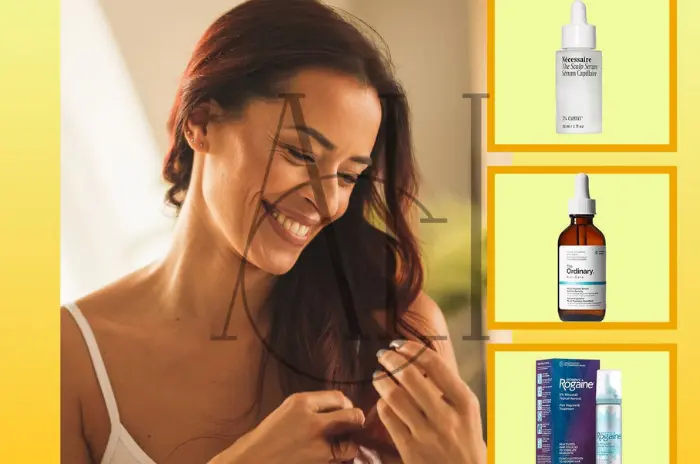
Potential Side Effects of Using Hair Growth Serums
Most serums are well-tolerated when used correctly, but irritation can derail progress. Knowing what to expect reduces drop-off.
| Issue | Why it happens | How it feels | What to do |
|---|---|---|---|
| Initial shedding (minoxidil) | Follicles synchronizing into anagen | More hairs in the drain for a few weeks | Usually self-limited; continue unless severe |
| Scalp irritation/dryness | Vehicle alcohols, fragrances, acids | Redness, itching, tightness | Switch to low-alcohol/fragrance-free base; reduce frequency temporarily |
| Greasiness/build-up | Heavy silicones or over-application | Flat roots, residue | Use less product; occasional gentle exfoliation; cleanse regularly |
| Contact dermatitis | Sensitivity to a component | Burning, persistent itch, flaking | Stop product; patch test alternatives; seek medical review if needed |
| Unwanted facial hair (rare, with minoxidil) | Dripping or transfer | Fine hairs on cheeks/temples | Apply carefully with dropper; blot excess; avoid bedtime transfer |
Safety notes:
-
Pregnancy or breastfeeding: review ingredients with a qualified professional before use.
-
Compounded topicals (e.g., finasteride in men) should be supervised by a licensed prescriber.
-
Do not layer too many actives at once; add one new product every 2–3 weeks to monitor tolerance.
How to Choose the Right Hair Serum for Your Hair Type
Match the serum to both your scalp condition and hair goals.
| Hair/scalp profile | Primary goals | Good serum choices | Avoid/adjust |
|---|---|---|---|
| Oily, flaky scalp (dandruff) | Calm flakes, reduce itch, allow actives to penetrate | Light caffeine/niacinamide blends; peptides after antifungal shampoo days | Very heavy oils on scalp; skip fragrance |
| Dry, sensitive scalp | Comfort and barrier support | Low-alcohol minoxidil or adenosine; peptide serums with panthenol | Strong acids/retinoids on the same night |
| Early pattern thinning | Stimulate anagen; protect against miniaturization | Minoxidil (foundation) ± adenosine; peptides as adjunct | Relying on peptides alone for AGA |
| Post-TE recovery (after stress/illness) | Support regrowth and anchoring | Peptide blends; light caffeine/antioxidant formulas | Crash dieting; harsh styling/heat |
| Fine hair lacking volume | Cosmetic fullness and less breakage | Peptides + lightweight polymers; niacinamide for scalp balance | Heavy silicone-rich serums that weigh down roots |
| Colored/processed hair | Reduce brittleness; soothe scalp | Peptides, panthenol, light oils on lengths (not scalp) | Frequent strong exfoliants or alcohol-heavy bases |
Routine builder (simple):
-
Morning: optional peptide or light caffeine/niacinamide serum on clean scalp.
-
Evening: minoxidil or adenosine serum on dry scalp.
-
Weekly: antifungal or gentle exfoliating shampoo if flake/build-up; LLLT 3–4x/week if available.
-
Monthly: progress photos under the same lighting.
Expert Tips for Maximizing Hair Growth Serum Results
Achieving optimal results from your chosen hair thickening serum requires proper application techniques and consistent usage. Dermatologist recommended protocols can significantly impact effectiveness.
Scalp preparation is crucial for serum absorption. Gently exfoliating the scalp once weekly removes dead skin cells and product buildup that can block follicles and prevent active ingredients from penetrating effectively.
Timing your serum application correctly can significantly impact results. Most experts recommend applying serums to clean, slightly damp hair before bedtime, allowing the ingredients to work overnight without interference from styling products.
Combining your hair growth serum with complementary products like hair growth shampoo and hair growth oil can amplify results. This layered approach addresses hair health from multiple angles, creating synergistic effects.
Hair Growth Serums for Postpartum Hair Loss
Postpartum hair loss affects up to 90% of new mothers, making specialized hair growth treatments essential for recovery. This temporary condition occurs due to hormonal fluctuations following childbirth.
Hair growth serums for women experiencing postpartum loss should focus on gentle, hormone-balancing ingredients. Natural ingredients like rosemary oil, pumpkin seed oil, and various peptides provide effective stimulation without interfering with hormonal recovery.
Nutritional support plays a crucial role in postpartum hair recovery. Look for serums containing biotin, iron, and other essential nutrients that may be depleted during pregnancy and breastfeeding.
Stress management is equally important, as elevated cortisol levels can prolong hair loss. Choose serums with calming ingredients like lavender or chamomile that provide aromatherapy benefits alongside hair growth stimulation.
Discover the Best Hair Growth Serums for Thicker Hair
When searching for the best hair growth serum, it’s essential to understand that not all products are created equal. The most effective hair serums combine multiple active ingredients that address different aspects of hair growth and scalp health.
DHT-blocking hair serums represent one of the most significant breakthroughs in hair loss prevention. Dihydrotestosterone (DHT) is a hormone that can shrink hair follicles, leading to progressive hair loss and thinning hair. Premium serums incorporate natural DHT blockers like saw palmetto, pumpkin seed oil, and green tea extract to protect follicles from this damaging hormone.
Biotin hair serums have become increasingly popular due to biotin’s crucial role in keratin production. This B-vitamin strengthens hair strands from within, reducing breakage and promoting thicker hair growth. Combined with other nutrients like niacinamide and pantothenic acid, biotin creates a powerful foundation for healthy hair development.
Rosemary oil has emerged as one of the most effective natural ingredients for hair regrowth. Clinical studies have shown that rosemary oil can be as effective as minoxidil in promoting hair growth, making it an excellent choice for those seeking natural alternatives to pharmaceutical treatments.
Which Types of Hair Loss Can Serums Treat?
Hair growth serums are most effective for specific types of hair loss, particularly those involving temporary follicle disruption rather than permanent follicle destruction. Understanding which conditions respond well to serum treatment helps set appropriate expectations and treatment goals.
Hair Loss Conditions and Serum Effectiveness:
| Condition | Serum Effectiveness | Best Ingredients | Expected Timeline |
|---|---|---|---|
| Early androgenetic alopecia | High | Minoxidil, saw palmetto | 3-6 months |
| Telogen effluvium | Very High | Growth factors, vitamins | 2-4 months |
| Stress-related thinning | High | Caffeine, peptides | 2-5 months |
| Nutritional deficiency hair loss | Moderate | Biotin, amino acids | 3-6 months |
| Alopecia areata (mild) | Low-Moderate | Anti-inflammatory compounds | Variable |
Scarring alopecia, advanced androgenetic alopecia with completely miniaturized follicles, and trichotillomania typically show limited response to serums alone. These conditions may require more aggressive medical intervention or specialized treatments.
FAQ
What hair growth serums do dermatologists recommend?
For pattern thinning, minoxidil remains the first-line topical. For sensitive users or as an adjunct, adenosine can be helpful. Peptide-based serums support anchoring and cosmetic density but work best in layered routines. Where appropriate and under medical guidance, compounded topicals are considered for resistant cases.
What are the key ingredients to look for?
Choose serums featuring minoxidil or adenosine for growth signaling; peptides such as GHK-Cu or acetyl tetrapeptide-3 for support and comfort; niacinamide and panthenol for barrier and irritation control. If dandruff is present, manage it with antifungal shampoos so serums can perform.
How often should I apply hair serum?
Most leave-on serums are used once daily. Minoxidil is typically applied once daily at night for convenience, while a complementary peptide or light caffeine/niacinamide serum can be used in the morning. Adjust frequency if irritation occurs and resume as tolerated.
What is the most effective hair serum?
Effectiveness depends on matching the active to the condition and using it consistently. For evidence-based regrowth in pattern thinning, minoxidil has the strongest track record. Pairing it with a well-tolerated peptide serum and good scalp care often yields better cosmetic outcomes than any single product.

